Yarns from Brazil
Written by Sarah Martin
This is part three in a 5-part series about life on a cattle station in Brazil. You can find part one here and part two here.
While out on the property, we had no access to phone reception or internet. I am guilty of being on my phone way more than I should, so it was a much-needed technology cleanse for me. The lack of technology meant we spent our evenings outside riding the quad, shooting (Nilton, if you’re reading this I’m sorry for blowing that hole in the fence), exploring the property or practicing our roping skills on the dummy. Watching the pantaneiros rope in the yards was enough inspiration for Lindsey and I to get quite competitive. The end of the day often saw the dummy dragged out and practice continue until well after the sun had set. Once it was dark, we’d head down into the shed and drink Tereré.
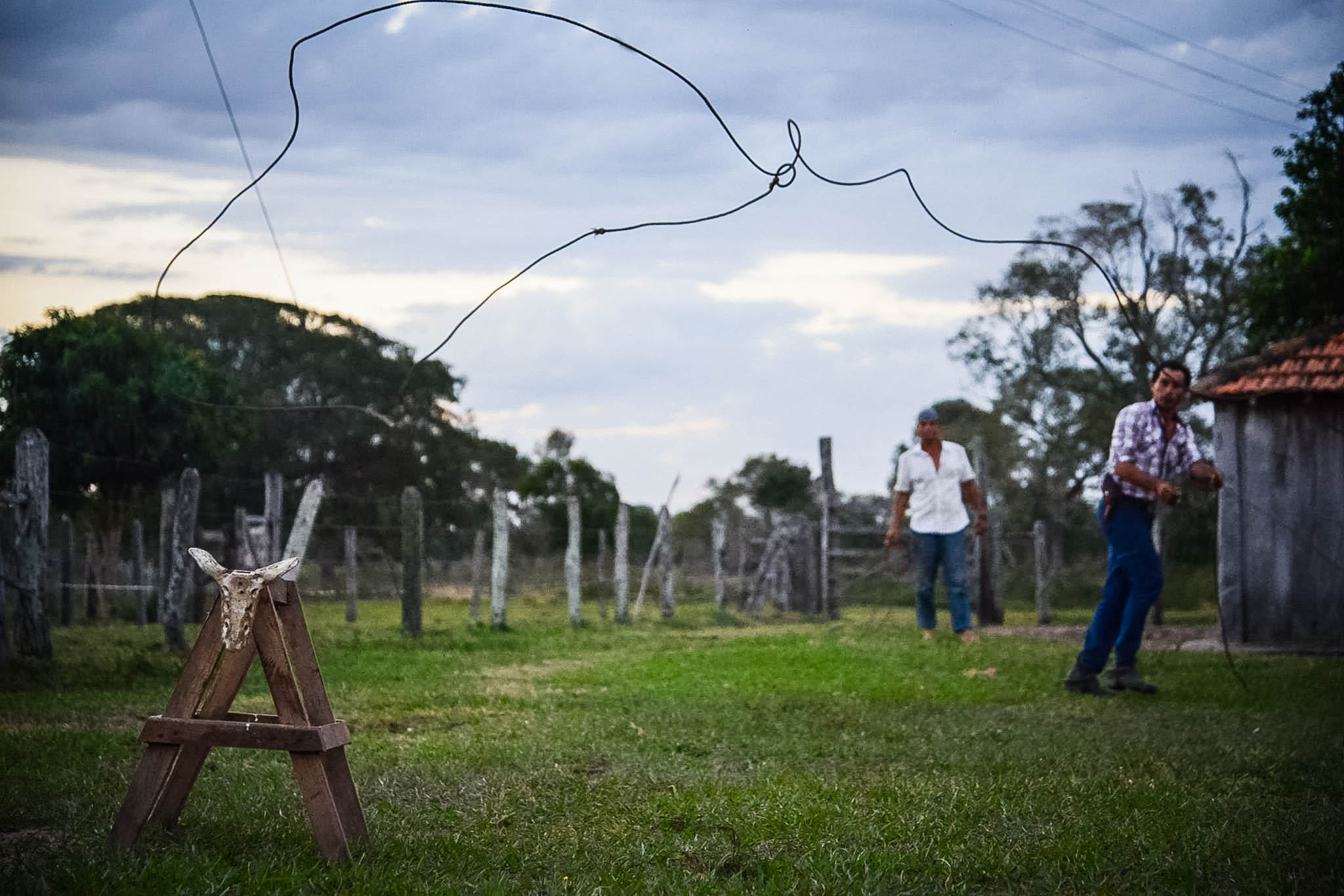 Toto practicing on the dummy.
Toto practicing on the dummy.
Tereré is like tea but prepared with ice cold water instead of hot. It’s an infusion of erva-mate (a type of holly). The Tereré is poured into a “guampa” which is like a cup made from the horns of the cattle. The youngest in the group is usually the one designated to the preparation of the Tereré. Macarrão, being the youngest, poured cold water into the guampa over the Tereré and passed it to me. As the recipient, I drank until all the water was gone and then passed it back to Macarrão so that he could prepare it for the next person. Whenever we weren’t with the workers, I was the youngest which meant I had to quickly learn to prepare it. The hot, tropical climate of the Pantanal meant we were drinking Tereré often as it was a refreshing way to stay hydrated. But more importantly it was a cultural gesture that signified communion and trust between the people we were with. The tradition of drinking tereré originated from the Guarani (indigenous tribe) culture that used to live in the border of Brazil, Paraguay and Argentina. The same herb can be used for drinking with hot water as well and it is called “mate” which is more common in Argentina, Uruguay and south of Brazil.
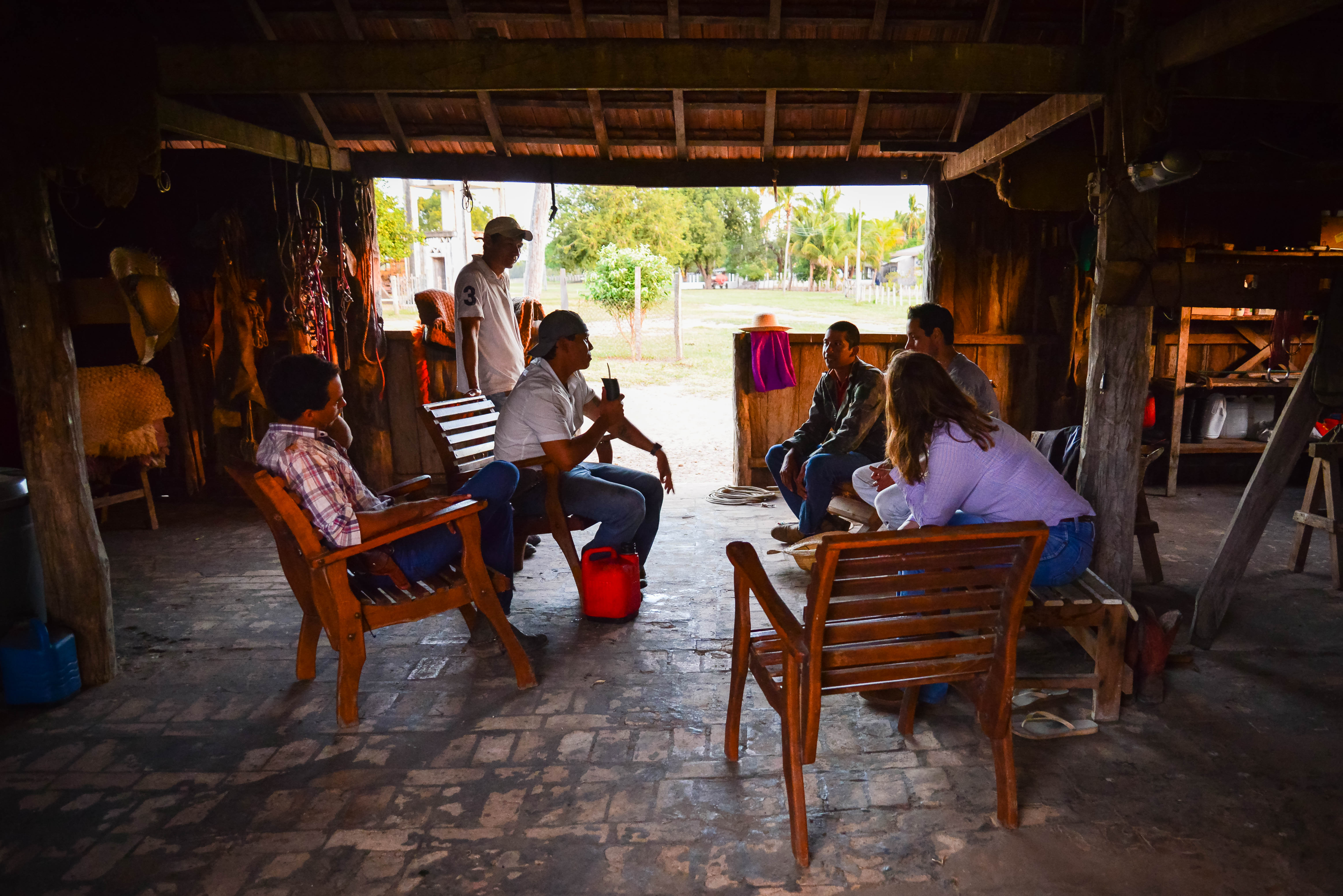 Drinking Terere in the shed.
Drinking Terere in the shed.
I found that drinking tereré was often the times when the best stories were told. Tiago translated a story that Basilio was telling about how he had gone down to the river to fish one afternoon about 30kms from the homestead. He was laughing as he spoke of how he’d looked up to see a huge jaguar staring back at him. He described how the two of them stared at each other for a few seconds and about how terrified he was until he turned tail and bolted for his life. He had looked over his shoulder to see that the jaguar had done the same thing and that the two of them had run away from each other. One night drinking terere, we were talking with Nilton about having to open one of the tronqueira gates. There were two of them on the property, they’re made from the trunks of Caranda palms. Four heavy trunks bar the way between the paddocks and it takes a number of people to slide each trunk from its support to allow the horses through. The trunks have to then be lifted and pushed back into place, taking the saying “shut the gate, mate” to a whole new level.
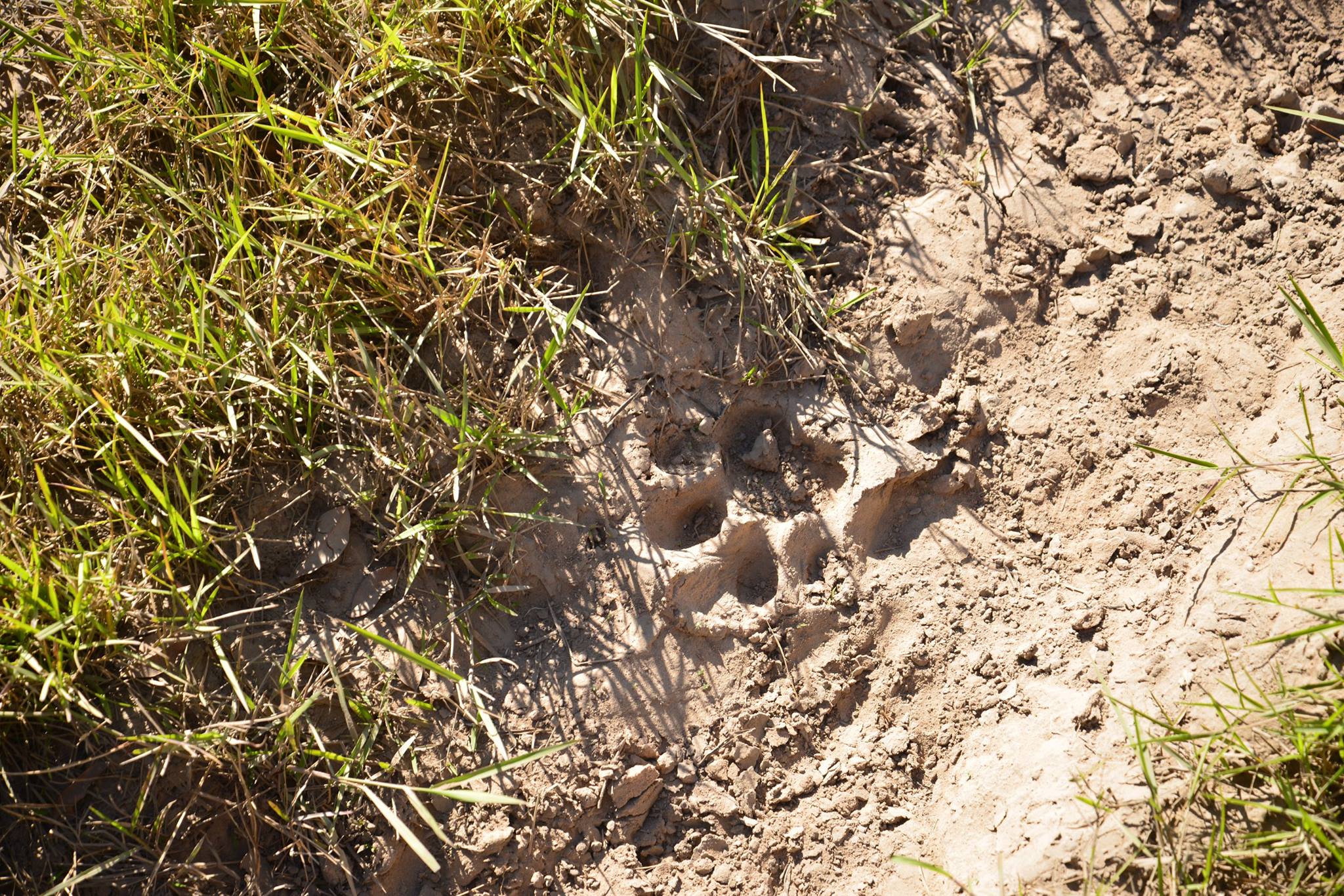 Jaguar prints found during a muster.
Jaguar prints found during a muster.
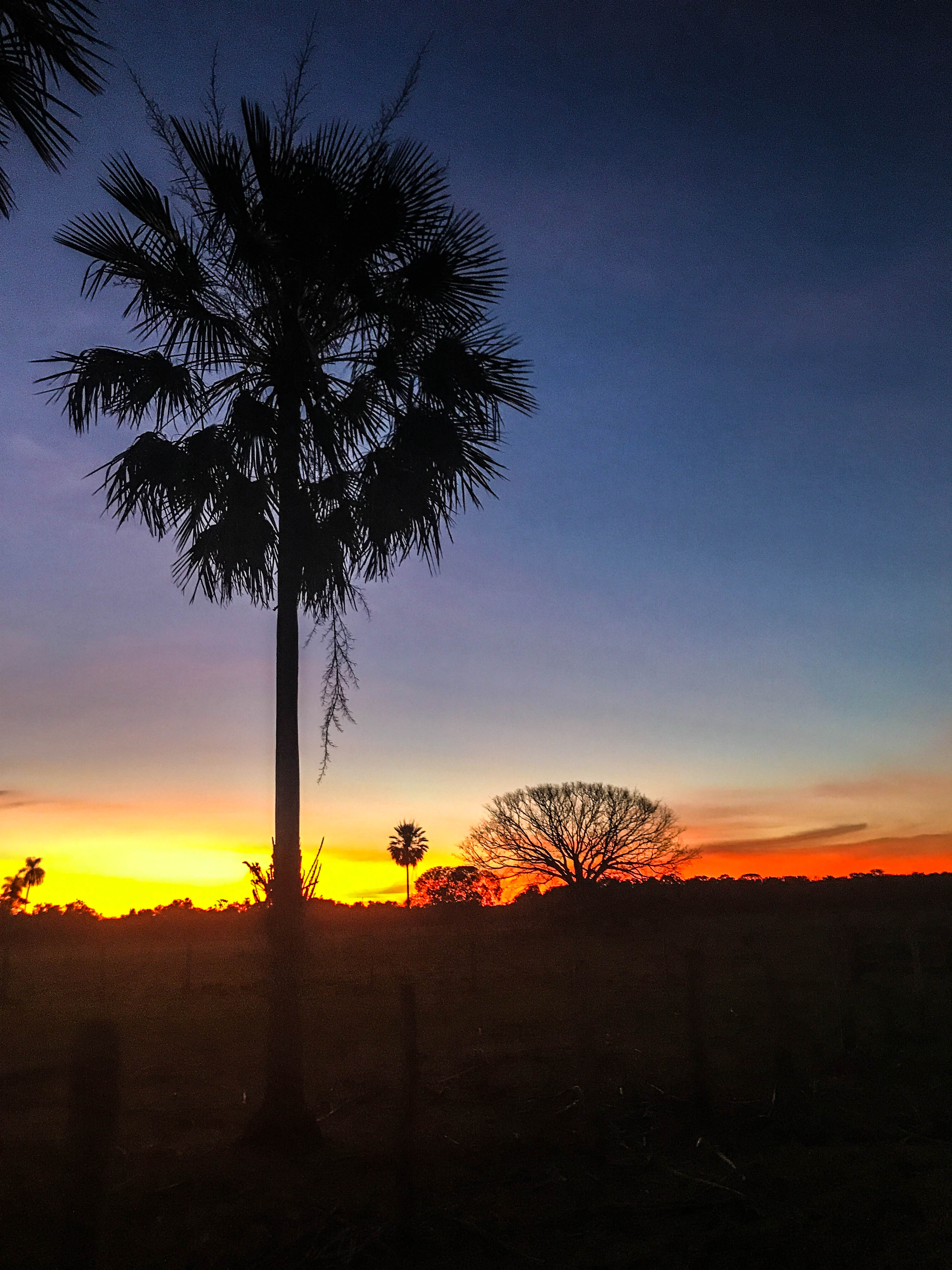 Caranda Palms.
Caranda Palms.
Nilton could only shake his head at our struggles with the tronqueira gate. He went on to tell us that when they first moved onto the farm they had to muster cattle up to the main road as the farm wasn’t accessible by vehicle. This journey included the opening and closing of somewhere between 30 to 50 of these gates! That’s at least 120 trunks to move on a one-way ride, and there was over 100 throughout the property. Needless to say, we did not complain about that gate again. Nilton’s stories were my favourite, his limited English never got in the way of a good yarn. He described to us the struggle of first arriving on the farm after meeting Monica at college in Rio. He moved to the Pantanal to her family’s farm in 1984 having come from a city background. He recalled the intense heat and the fact that the house had no insect screens. The summer brought the wet season and with the wet season came a lot of extra housemates. Mosquitos were the main problem, I got itchy just listening to how they couldn’t escape the onslaught. When the flood waters rose so came the tarantulas trying to find higher ground. I tried to sympathize by telling him I once found a huge huntsman in my towel after a shower, but I would take a huntsman over a tarantula any day of the week. Needless to say I checked all my towels and bedding from there on out.
The wet season in the Pantanal is something I’m sure I’d have to see to believe. The only way of getting around the property is by boat or by tractor so when you’re out working, these things need to be taken into consideration if something was to go wrong. Nilton described to us the day he broke his leg. He had been trying to get himself up onto a horse but slipped and caught his foot in the stirrup. The horse shied and kicked out, connecting with his kneecap and snapping his leg. Surrounded by water and with only horses as transport, one of the workers had to ride back 20kms to the homestead and call a plane. He then had to drive the tractor back out through the floodwater to pick up Nilton, then back to the homestead to meet the plane.
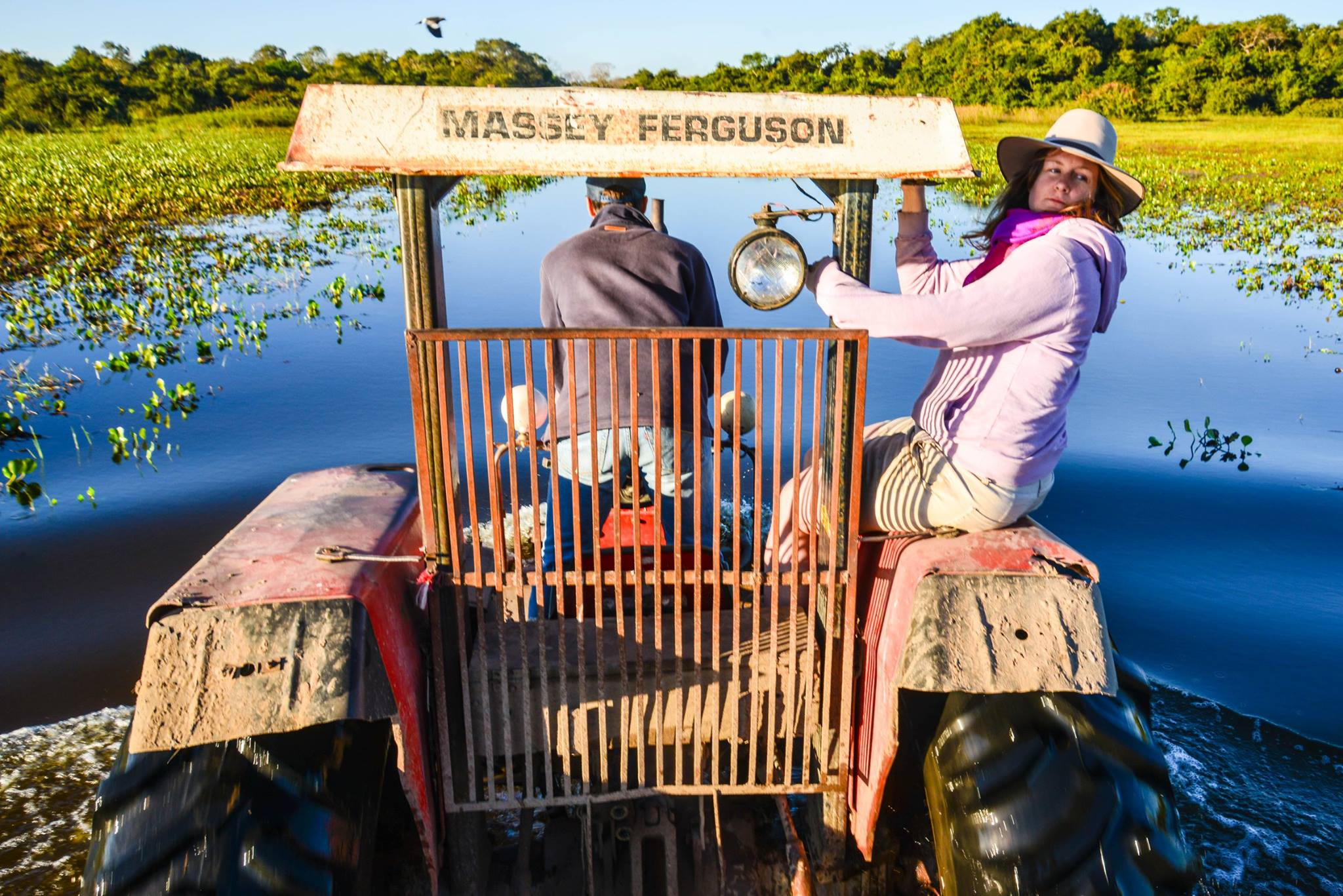 Some places on the property were only accessible by horse or tractor because of the water.
Some places on the property were only accessible by horse or tractor because of the water.

I could write forever about the stories we were told from days with the cattle. Brazilian culture is very social and life out on a station in the Pantanal did not mean we missed out. Drinking Terere for us was one of the best ways to be introduced to this part of the culture. It was toward the end of our stay that our hosts decided to have a barbeque and invite friends and family from neighboring stations to come and visit Fazenda Carandazal. Now, when I say barbeque I want you to forget any idea you had about barbeques before this. Brazilians have mastered the art of cooking meat and this Brazilian barbeque or “churrasqueiras” is by far the biggest feed I’ve had to date.
The meat used for the barbeque was fresh Nelore and sheep from off the farm that morning. Nogueira, Basilio, Macarrão and Totó started digging early and had a huge fire pit burning in the yard by 11am. They’d made skewers for the barbeque out of trees and began loading them up with the fresh meat which required a fair bit of strength given how much of it there was. Rock salt was then massaged into the meat and the skewers were rested on supports stuck into the ground over the fire pit. The meat was cooked slowly over a number of hours, carefully turned when required. The air was filled with talking, laughing, the smell of dinner and the sound of Brazilian country music.
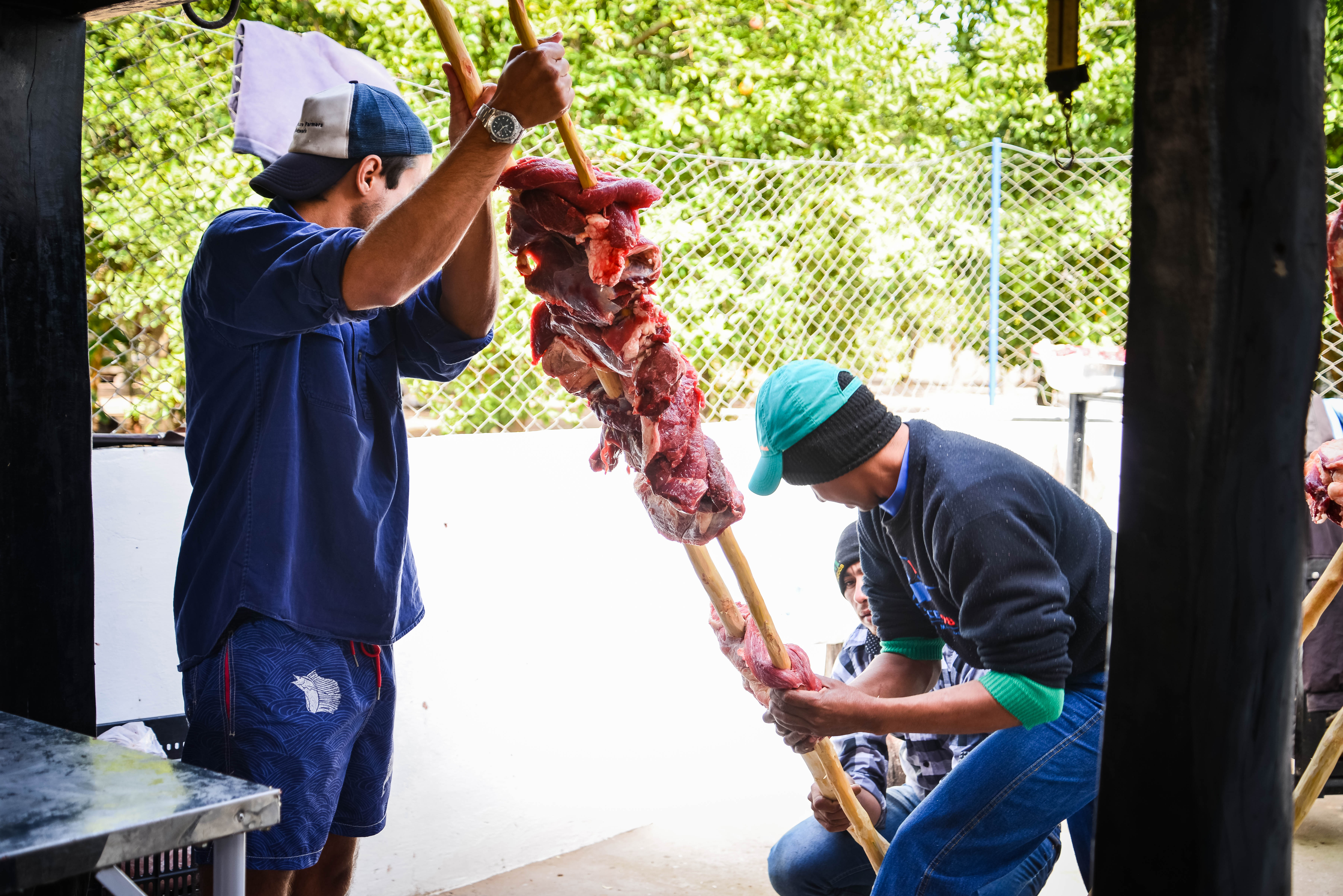
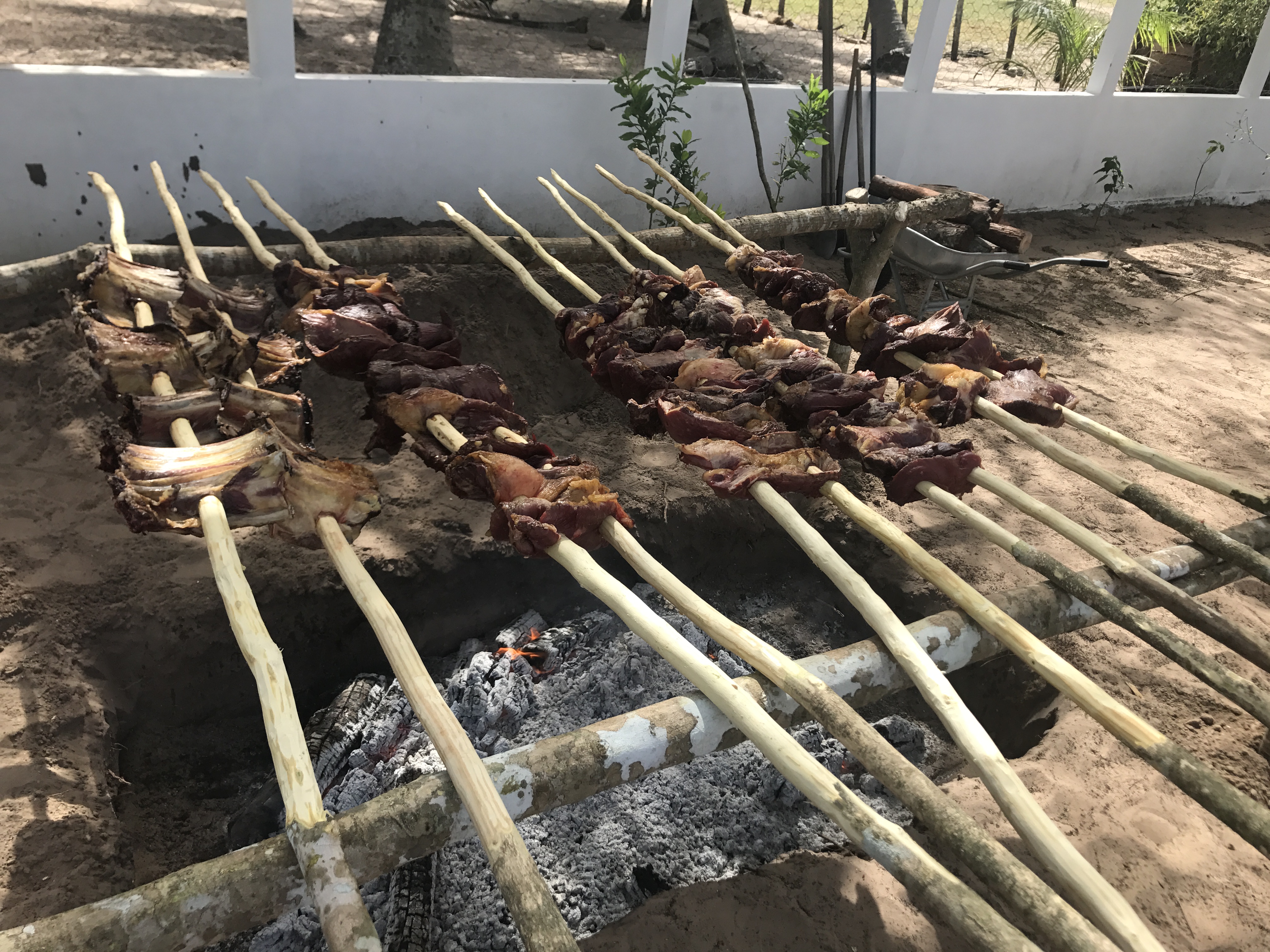
We washed dinner down with beer and Caipirinhas, Brazil’s national cocktail. Caipirinhas are made using cachaça, sugar and lime – Tiago’s brother-in-law took the title of best Caipirinhas in Brazil. The party lasted long into the night, with a lot of sore heads in the morning. We cured our hangovers by tucking into the leftovers from the night before, which ended up lasting for days. The hospitality and kindness shown to us by our hosts and their friends and family was extremely humbling. They asked for nothing from us in return, just for us to enjoy their home, culture and experience station life at its best.
